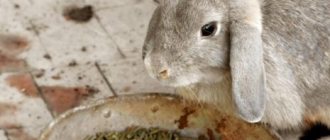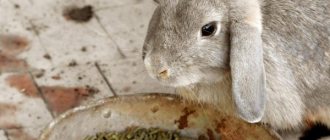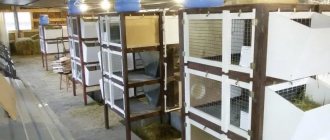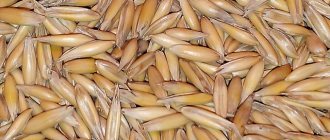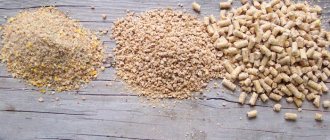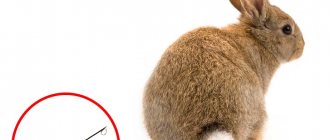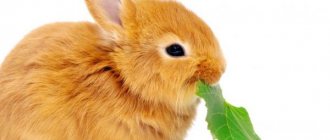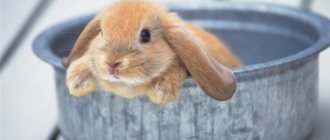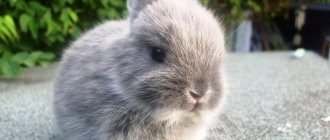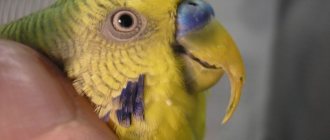- Iodide mixtures
Coccidiosis in rabbits is ubiquitous and is a dangerous invasive disease that leads to severe damage to the intestines and liver of animals. Its causative agents are protozoan unicellular parasites of the coccidia class (the genus Eimeria, the development of which does not imply a change in host).
With timely diagnosis, coccidiosis can be successfully treated
About the disease and pathogen
Coccidiosis is caused by protozoan endoparasites (coccidia) belonging to the class Sporozoans and the genus Eimeria, which is why the pathology is also called eimeriosis. They parasitize animals of all species, as well as humans, and have sexual and asexual development cycles. When parasitizing mammals, both of these cycles are carried out in the body of one host; intracellular parasites affect blood cells, liver parenchyma and bile ducts, as well as the epithelium of the small intestine.
In livestock production, coccidiosis is most common in rabbits, pigs and birds. Its wide distribution, despite the modern development of veterinary medicine, is due to many factors, including the adaptation of the pathogen to the chemotherapeutic drugs used for treatment and prevention.
Factors contributing to the spread:
- Intracellular method of parasitism in the host body.
- Excessively active reproduction (in the host’s body, one oocyst can, depending on the species, reproduce from 100 thousand to 2 million individuals).
- Coccidia spores - oocysts consist of a double-circuit shell, which is resistant to most agents used for disinfection.
- The combination of two methods of reproduction (asexual and sexual) makes it possible to develop immunity to the effects of drugs (thanks to genetic exchange).
Eimeriosis of rabbits was first discovered by Leeuwenhoek back in the 17th century, but a detailed description appeared only in the late thirties of the 19th century (Geik). There are about 10 varieties of coccidia that parasitize rabbits (according to foreign authors - up to 25 species, this is due to the fact that some species have several names). Most varieties of the pathogen parasitize in the cells of the intestinal epithelium (cause the intestinal form of the disease), and some in the liver (hepatic form); most often, several species parasitize at the same time.
The disease can often be complicated by a secondary bacterial infection (in particular, E. coli), which is caused by decreased immunity and the development of inflammatory processes in the intestines and liver. The death of animals occurs as a result of poisoning by toxins produced during the life of the pathogen and during rotting of the intestinal contents, resulting from inflammation or from developing secondary infections. Considering the diseases of rabbits, coccidiosis, due to its high mortality (especially in young animals) and mass distribution, can confidently be classified as the most dangerous, along with such viral diseases as hemorrhagic disease and myxomatosis.
Is coccidiosis dangerous for humans?
Alas, coccidia are dangerous not only for animals; moreover, there are two types of coccidia that parasitize only in the human body. These are Isospora belli Wenyon, 1923 and Isospora hominis (Rivolta, 1878) Dobell, 1919. Fortunately, coccidiosis does not affect humans very often, and the consequences of such a disease are not comparable in severity to those that can be observed in rabbits.
Find out everything about breeding decorative rabbits at home.
In any case, we are definitely not talking about epidemics and deaths. In confirmation, it is worth noting that the total number of human diseases with coccidiosis on the entire planet is measured in only hundreds, and, as a rule, we are talking about countries with hot climates (this is interesting, because it is known that coccidia are resistant to frost, they tolerate dryness much more difficultly and high temperatures).
Coccidiosis in humans is classified as a “dirty hand” disease, although the most likely source of infection is still untreated water and food (oocysts can remain in the soil for a long time), as well as meat from sick animals that have not undergone full heat treatment.
In the first stages of the disease, the patient experiences general weakness, headache, increased body temperature, then, after two weeks, acute abdominal pain and diarrhea with blood and mucus appear.
Did you know? In South Africa, several cases of coccidia, “uncharacteristic” for humans, have been detected in the human body - Isospora natalensis Elsdon-Dew, 1953. However, scientists have yet to find out whether this type of pathogen can cause symptoms of the disease.
In severe cases, if medical assistance was not provided in a timely manner and the parasites were not removed from the body, complications may occur in the form of ulcers and erosions of the intestinal mucosa, however, in general, coccidiosis in humans is curable.
Spread and infection
The most favorable conditions for the development of the disease are the warm season, namely with high humidity and temperatures from 20 to 30 degrees, the sporogony stage (development of the parasite outside the host body) occurs the fastest (1-3 days), under other conditions from 4 to 6 days . Therefore, the peak incidence occurs in the summer months, although animals can get sick at any time of the year.
The spores are little susceptible to external influences and can persist in the external environment for a long time (up to a year). Only very high (from 80 to 100 degrees) temperature has the most detrimental effect on them - death within a few seconds. At a temperature of 55 degrees, this already takes a quarter of an hour. Also, partial death of oocysts occurs at low temperatures (below 15 degrees). The effective action of chemicals used for disinfection requires a large amount of time, which presents certain difficulties in their use.
Eimeria (coccidia) are isolated from the body of a sick rabbit along with feces. Animals become infected through nutrition (through the mouth), the sources of infection are contaminated:
- Food and water.
- Mother's nipples (rabbits can become infected from the very first days of life).
- Feces of sick rabbits.
- When eating one's own feces (coprophagia), re-infection occurs.
A necessary condition for spread is the presence of contaminated sources of infection in the rabbitry for more than a day (the minimum time required for completion of sporogony), which must be taken into account during prevention.
Development of the disease
With a small degree of infection (up to 100 thousand oocysts) and the rabbit’s body is in good condition, the disease may not manifest itself. The following conditions contribute to the development of the disease:
- Unbalanced diet (vitamin and mineral composition).
- Feeding young animals with coccidiobioses (products that promote the development of coccidia - fat and dry milk, alfalfa and wheat bran, vitamin B6).
- High protein feeding (over 10%).
- Low quality feed.
- Abrupt transfer of animals from one food to another.
- With poor feeding and a lack of milk in nursing rabbits, baby rabbits can begin to eat roughage early, which injures their intestines, which are not yet ready for this, causing the development of inflammation. Which, in turn, will cause the development of coccidiosis.
- Anything that can negatively affect the physiological state (stress, hypothermia, draft, infectious diseases, etc.).
- Poor living conditions (overcrowding, placement of young animals together with adults, unsanitary conditions).
Is it possible to eat rabbit meat that has coccidiosis?
Oddly enough, the meat of a rabbit suffering from coccidiosis can be eaten (however, if you consider that different types of coccidia can parasitize the human and rodent body, then everything is logical).
There are no restrictions even on eating meat from animals that have been treated with coccidiostatics, but for safety reasons, it is still worth asking how long it takes for a particular drug to be completely eliminated from the rabbit’s body, and only after this period should you use such meat. Moreover, heat treatment does not always help remove antibiotics and other chemicals from the product.
Important! Only the liver of an infected rabbit should not be used, not because it can cause disease in humans, but because even after it is digested and excreted from the body, viable coccidia may remain in the feces, which will then enter the water or soil and become a source of infection other animals.
Manifestation of pathology (symptoms)
Adult rabbits exhibit resistance to the development of the disease; it is associated with the predominance of acid-forming bacteria in their intestines (suppresses the development of eimeria), while in young rabbits alkali-forming bacteria predominate (on the contrary, they promote). Therefore, the most susceptible are rabbits from twenty days to four to five months of age.
Symptoms of the disease begin to appear on the second or third day after infection. According to the form of the disease, they are distinguished:
- Latent or hidden (most adults or recovered rabbits).
- An acute form of the disease (most often found in young animals one to two months of age; baby rabbits die in 10-15 days; they can suddenly fall, throw back their heads and, after making several convulsive movements, die).
- Subacute form of the disease (proceeds more calmly, the strongest rabbits can recover and become carriers).
In addition, depending on the more affected organ, the following may occur:
- Intestinal form - manifested by periodic diarrhea or just soft feces, deterioration or lack of appetite, animals are stunted in growth, lose weight, the coat becomes dull, disheveled, the stomach sags, the mucous membranes become anemic (pale), blood and mucus appear in the feces.
- Hepatic form - occurs with similar, but not so pronounced symptoms, often in a chronic form (can last 1-2 months), the mucous membranes (eyes, mouth) turn yellow, the stomach swells, the animals become severely emaciated and die.
Pathological changes
Upon opening, in the intestine you can see many small (the size of a millet or poppy seed) nodules protruding through the intestinal lining, its mucous membranes are red, flaking, the contents are liquid, with gases. The liver also contains whitish nodules and cords that do not protrude above the surface; they contain a creamy (in newly formed) mass, and in older ones it is dryish, similar to cottage cheese (coccidia are found in it upon microscopic examination). The bile ducts are enlarged, with areas of proliferation of connective tissue.
Diagnostic methods
To make a diagnosis, the observed symptoms are analyzed, a microscopic examination of feces is carried out, and the internal organs of dead animals are also examined. The pathologist discovers white nodular formations in the tissues of the liver and intestines in the dead rabbit, ranging in diameter from poppy seeds to cereal grains - these are accumulations of parasites. The material taken during the autopsy is sent for microscopic examination. Coccidia cysts detected under a microscope allow an accurate diagnosis to be made.
Treatment
Treatment is aimed at combating endogenous (located inside the host’s body) stages of parasite development; for this purpose, coccidiostatics (drugs that disrupt metabolic processes within the pathogen) are used. According to recent studies, drugs that have been used for a very long time: sulfonamides (sulfamerazine, sulfamidine, etc.), nitrofurans, antibiotics (metronidazole, chloramphenicol and others) are noticeably inferior in action to more modern drugs.
As the main principle of treatment, large rabbit farms use constant rotation (change) of drugs in order to prevent the pathogen from becoming accustomed to their action.
The most commonly used anti-coccidiosis drugs for rabbits are:
- Diaclazuril (“Solikoks”, “Diakoks”, “Klinakoks”).
- Robenidine (Cycostat).
- Salinomycin sodium (“Sakoks”, “Koktsisan”).
- Methylchloropindole (Koyden, Clopidol, Lerbeck).
However, according to studies, the most effective at the moment are drugs with active ingredients such as amprolium and toltrazuril. For the treatment of rabbits they are used as follows:
- “Amprolium 22%” – 1.4 g per 5-10 kg of animal body weight, 1 time per day, 3-5 days in a row, along with food or water.
- As a drug with the active ingredient toltrazuril, it is best to use the drug "Baykoks", German. The most commonly used is Baycox 2.5%, at a dosage of 0.2 ml per 1 kg of body weight, but according to recent research conducted by Bayer, this dosage does not have enough effect on the causative agent of the disease. Increasing the dose to 0.4 ml can cause intoxication in rabbits. Therefore, it is recommended to use a newer drug - “Baycox 5%”, at a dosage of 0.2 ml per 1 kg of body weight, 1 time per day, 2 days in a row, with a mandatory repetition of the course after 5 days.
Prevention
Prevention of coccidiosis in rabbits is based on compliance with the following rules:
- Give animals only good quality feed (balanced in macro- and microelements).
- Strict adherence to sanitary rules (regular cleaning and disinfection - treatment with boiling water or a blowtorch).
- When changing food, do it only gradually, over 5-7 days.
- Mesh floor in cages.
- Preventing drafts, sudden temperature changes and high humidity.
- Under no circumstances should animals be fed from the floor, but only from feeders located so that feces cannot get into them.
- Quarantine of newly arriving animals, with mandatory testing for coccidiosis.
In addition, prophylaxis with iodine is recommended. Starting from the middle of the fourth week of pregnancy, and until the fifth day of feeding, female rabbits are given 100 ml of a 0.01% solution, then, after a five-day break, 200 ml of a 0.02% solution is given for 15 days. They continue to give the rabbits according to the same principle, starting from the day of weaning - 10 days of 50 ml (0.01%), five days of rest and another 15 days of 70 to 100 ml (0.02% solution). To avoid a reaction, metal containers should absolutely not be used.
A significant disadvantage of this method is that rabbits are very sensitive to odors and may not drink water with iodine well. In this case, the same drugs are used for prevention as for treatment, only according to a different scheme. For example, “Amprolium 22%” - 1.4 g per 20-25 kg of body weight, 1 time per day, for 2 weeks.
One should take into account the fact that, although treatment can be quite effective, recovered animals can remain lifelong carriers of the pathogen and infect others. Therefore, prevention is the main means of combating the disease.
